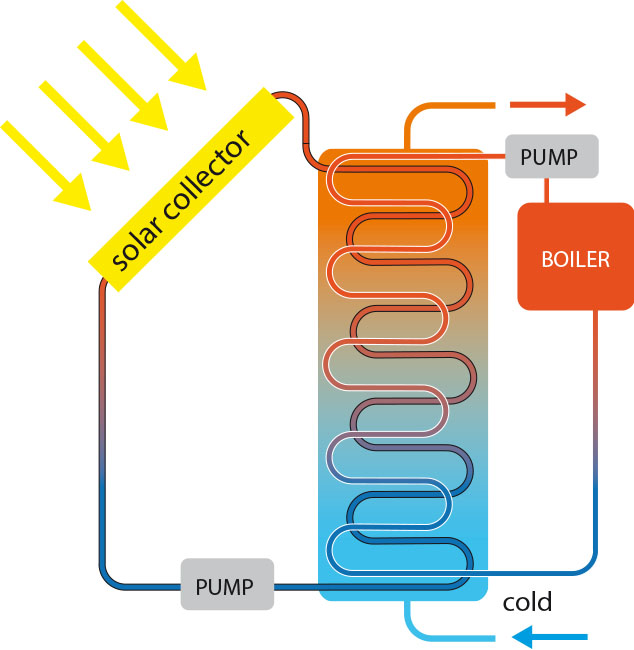Solar radiation is an infinite source of heat and light. The best-known solar-based technologies are thermal systems for heating domestic water and photovoltaic panels for producing electricity. Photovoltaic or thermal systems must be placed in locations where the Sun’s rays can reach them in the most efficient way.
Thermal systems
Fig. 42 – Principle of a solar thermal system
Thermal systems convert sunlight into heat. Solar heat is transmitted to a fluid, which transports the heat to the heat exchanger via pumps with a minimal heat loss. Then the exchanger transfers the heat to the domestic hot water store. In summer, the boiler heats water to a comfortable temperature. Solar thermal systems are proven technology and they can be installed in a simple and cost-effective manner. Compared to photovoltaic systems, solar thermal systems are not as expensive and offer a significant reduction of energy consumption.
Photovoltaic systems
Photovoltaic systems convert sunlight into electricity. Photovoltaic technology is based on water-based silicon cells. Solar energy is converted into a direct current (DC). If needed, the photovoltaic system can be connected to the electrical grid to export electricity (grid-connected system).
The main advantage of a photovoltaic system is that it produces energy from a highly renewable source, without carbon emissions and noise. Intense sunlight is not required to ensure that the system operates properly. A small quantity of sunlight is enough to produce energy. This system requires relatively little maintenance and has a lifetime of 15 to 30 years. The main disadvantages are capital costs and the need for a large unshaded surface.
